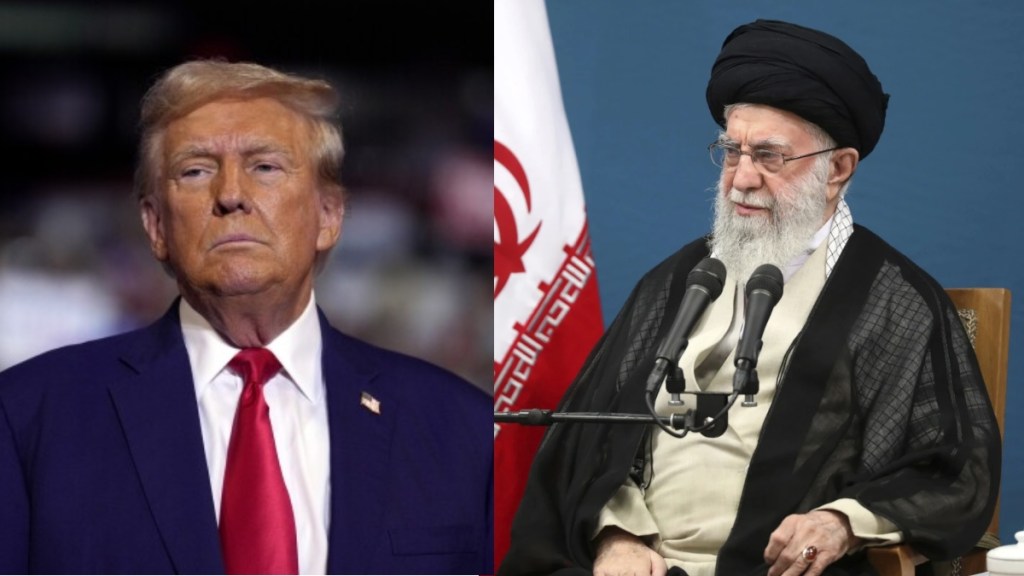US President Donald Trump is reportedly warming to the idea of using US military assets to strike Iranian nuclear facilities. Officials and experts say that the United States’ 30,000-pound “bunker buster” bomb, known as the GBU-57A/B Massive Ordnance Penetrator (MOP), is the only weapon capable of destroying the Fordow Fuel Enrichment Plant. This facility is considered a key part of Tehran’s nuclear program and is uniquely challenging to target because it is carved into a mountain and extends deep underground, estimated to be 80 to 90 meters beneath the surface, according to CNN and multiple media reports.
Israel’s weapons are unable to reach these underground facilities, a US official told USA Today on condition of anonymity. The sites require 30,000-pound MOP bombs, which can only be delivered by US-made B-2 stealth bombers.
Former Israeli Defense Minister Yoav Gallant told CNN, “We believe that the President of the US has an obligation to make sure that the region is going in a positive way and that the world is free from Iran that possesses (a) nuclear weapon.”
Here’s all about the GBU-57 MOP
The GBU-57 MOP is a massive bomb weighing 30,000 pounds, of which 6,000 pounds consists of high explosives. It is specifically designed to reach and destroy adversaries’ weapons of mass destruction located in well-protected underground facilities.
The bomb’s thick, hard shell allows it to withstand the impact of hitting the ground at high speed and penetrate to great depths before detonating. The fuse mechanism is engineered to survive the intense forces involved in penetration and to detonate only once the bomb has reached the target depth, making it a highly complex weapon system. Despite its advanced design, the MOP has never yet been used operationally.
Fordow facility – A highly fortified nuclear site
The Fordow Fuel Enrichment Plant is one of the most heavily fortified nuclear sites in Iran. Its underground location within a mountain makes it extremely difficult to damage with conventional weapons.
The facility is protected by sophisticated surface-to-air missile systems, including Russian-made S-300 missiles. Reports from the International Atomic Energy Agency (IAEA) confirm that Iran has increased uranium enrichment at Fordow to 60 per cent purity, which significantly shortens the time needed to produce weapons-grade uranium.
This development intensified concerns about the potential for Iran to develop nuclear weapons.
However, [ADD- latest development. their latest quote on uranium]
Challenges and limitations of using the MOP
While the MOP is currently the only known bomb capable of reaching such a deeply buried target, experts caution that Fordow may be at the very edge of the bomb’s capabilities. Some analyses suggest that a single MOP strike might not be sufficient to destroy the entire facility, and multiple impacts at the same aiming point could be necessary to have a good chance of penetrating the underground complex.
The B-2 Spirit stealth bomber is the only aircraft capable of delivering the MOP operationally. This bomber can fly approximately 6,000 nautical miles without refuelling and is designed to penetrate sophisticated enemy defenses to strike heavily defended targets.
The development of the MOP began in 2004 amid growing concerns about weapons of mass destruction. Studies had shown that bombing only the entrances of underground facilities would not generate enough blast pressure to destroy them completely. Boeing won the contract to integrate the weapon system with US aircraft in 2009. Since then, approximately 20 to 30 MOP bombs have been delivered to the US Air Force.
The B-2 bomber, manufactured by Northrop Grumman, is the backbone of stealth technology and has been used in recent years to strike underground weapons storage facilities, such as those held by Iran-backed Houthis in Yemen.
Strategic implications of a potential strike
A US strike on the Fordow facility would mark a significant escalation in the ongoing conflict in the Middle East. While destroying Fordow could substantially degrade Iran’s uranium enrichment capabilities, it might not eliminate the country’s entire nuclear infrastructure.
Such an attack carries risks of regional escalation and broader conflict. The decision to use military force involves weighing the goal of preventing Iran from developing nuclear weapons against the potential consequences of direct military engagement in the region.

